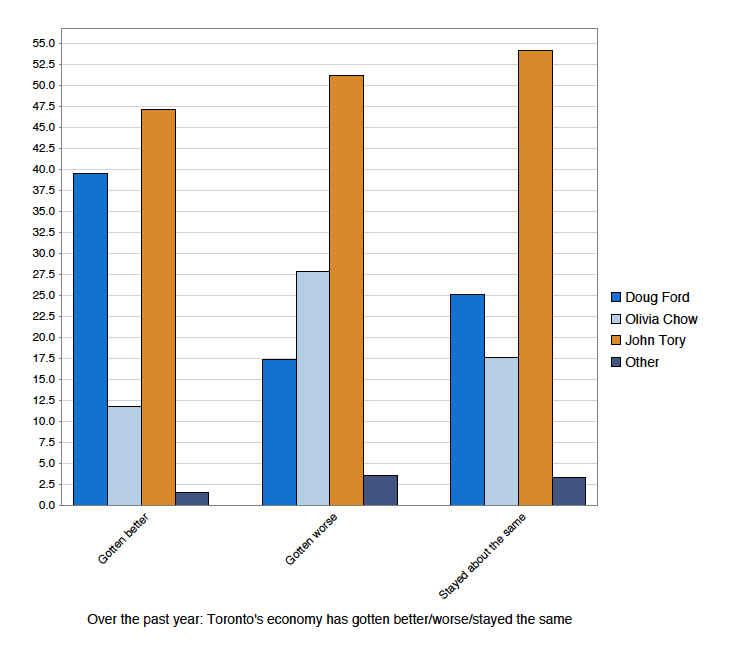Michael McGregor (Ryerson, Politics & Public Administration) and his Canadian Municipal Election Study (CMES) research team recently gave their 2014 Toronto Election Study data to CORA for preservation and for making available to researchers, journalists, and others for non-commercial use.
The Toronto Election Study conducted an online panel tracking project with eligible voters in the city of Toronto for the municipal election held on October 27, 2014. For further information, including data download options, technical documentation, and codebook, access the data in ODESI.
This is a rich dataset on voting behaviour and issue opinions from a municipal election in Canada’s largest city. The survey has standard questions on voters’ views of the mayoral and council candidates; political predispositions at the municipal, provincial, and federal levels; as well as attitudes toward issues such as municipal taxation powers, public transit, social housing, and more.
There are many interesting insights coming from these data. To illustrate the rich analyses that can be derived, the chart below (figure 1) plots mayoral vote choice against perceptions of the Toronto economy, specifically, whether it had gotten worse, stayed the same, or improved compared to the previous year.
Figure 1 - Mayoral vote choice and Toronto's Economic Performance

Interestingly, among those with an optimistic view of the economy, nearly 40% voted for Doug Ford in the 2014 Toronto provincial election (Ford is now Premier of Ontario), nearly 48% for John Tory (the winner of the 2014 and 2018 mayoral races), and about 12% for Olivia Chow. It was among the economic optimists that the gap between Ford and Tory was the smallest, at least than 10 percentage points. This may be due in part to Ford’s claims during the campaign that he had “transformed Toronto into an economic powerhouse” (Gee, 2013). Among those who thought the economy was the same or worse than the previous year, the gap between Ford and Tory was about 30 percentage points or more. It was among the economic pessimists that Chow, heavily associated with the NDP, did best.
While the idea that municipal politicians have strong leverage on the local economy is clearly wrong, there are various reasons why municipal voters may have this perception. As McGregor and his team point out in their analysis of economic factors and the vote, the absence of party labels can increase other influences on the vote, including using the economy as a short cut, and political rhetoric during the campaign may have led voters to make an erroneous link between municipal politicians and economic performance. For more analysis by the CMES team on voting behaviour in the 2014 Toronto election, please visit their website.